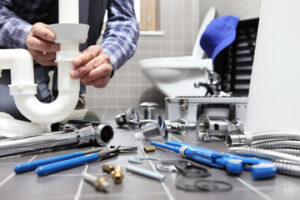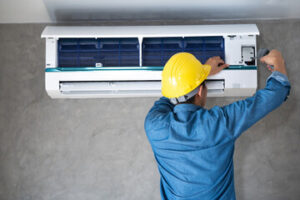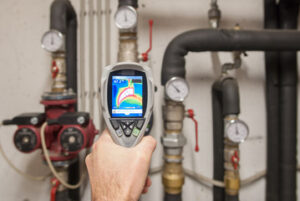Roof Company Baton Rouge offers various services, from roof installation to energy-efficient windows and gutters. Some even provide siding installation to improve the appearance of a home’s exterior.

When evaluating a roofing company, it’s essential to read a diverse set of reviews. This way, you can get a more accurate picture of their work.
A new roof is a significant expense, but it can add value to your home. It’s important to look at a roof replacement as an investment instead of a maintenance expense. Unlike plumbing, foundation work and other projects that don’t add resale value to your house, a new roof is a long-term project with a tangible return on investment.
When selecting a roofing company, it’s best to choose one that is licensed and insured. This will ensure the roofing company is qualified to perform the job and provides workmanship warranties for future repairs. It’s also important to check if the roofing company has a business license and workers’ compensation insurance for its employees.
Roofing companies that offer competitive rates are typically larger businesses that have multiple crews on hand to handle jobs quickly. They are often able to negotiate with customers, as they have access to a wide range of materials and can buy in bulk at discounted prices. They’ll usually have lower overhead costs, which enables them to pass the savings on to their clients.
It’s also important to choose a roofing company that uses quality materials and is transparent about the cost of the project. Many unscrupulous contractors will overcharge homeowners by hiding charges or quoting low estimates and then raising them later on. By choosing a roofing company with a great reputation, you’re more likely to get fair prices and high-quality work.
Unless you have a large amount of equity in your home, it’s usually better to save for a roofing project rather than borrow money to pay for it. If you’re not comfortable putting your home on the line, you can consider personal loans, which have higher interest rates than home equity loans but are less risky.
Small-business owners wear a lot of hats, and they must be prepared for the unexpected as well as the planned. It’s common for small businesses to hire freelance bookkeepers to keep track of finances on an ongoing basis. This can help with the day-to-day operations and free up the owner’s time to focus on generating leads.
High-Quality Work
One of the most important things to look for when hiring a roofer is high-quality work. The most obvious way to check this is by reading online reviews, but it’s also helpful to ask for referrals from friends and family members who have recently used a roofing company themselves.
If you see a lot of negative reviews, it might be a sign that the company is not very reliable. Also, be wary of contractors who only accept cash payments. This is a red flag that they are probably not a legitimate roofing contractor.
A good roofing company will offer a variety of services and will be licensed, insured, and certified. They should also provide you with a written estimate before beginning any work. Often, scammers will avoid providing written estimates. Instead, they will ask you to hand over your insurance claim money to them and then disappear with it.
Choosing a roofing contractor is a big decision, so it’s best to take your time and do your research. It’s also important to remember that the lowest bid is not necessarily the best choice. Companies that quote low put their workers under pressure to complete the job within a budget, and this can result in rushed and sub-par work.
Another important thing to look for in a roofing company is their customer service. Look for reviews about how they respond to warranty claims and whether or not they are available to answer questions after the job is done. It’s also a good idea to choose a company that offers a workmanship warranty, which can last for five or ten years.
Many small business owners wear many hats, including the role of chief brand officer. Creating a brand that reflects your company’s values and catches the attention of your target audience can make or break your business. Fortunately, there are many tools and strategies for branding your roofing company that will help you stand out from the competition. Some of these methods include utilizing social media, running a paid campaign on Google, and creating a website that showcases your work.
Peace of Mind
Roofing can be a messy job, but when you work with a roof company, you won’t have to worry about the cleanup process. The professionals will take care of everything, including removing all debris from the work site. Additionally, most roof companies have insurance policies that cover any accidents or injuries that may occur during the project. This means you won’t have to pay for any medical bills out of pocket. This can be a huge relief for homeowners!
Another benefit of working with a roof company is that they’re often local. This means they’ll be more flexible with scheduling. They can come to your home for an estimate at a time that’s convenient for you, and they’ll be able to accommodate any special requests you might have.
Local Experts
The team at Roof Company can inspect your roof and recommend repairs. They work on sloped residential roofing systems using shingle products from brands like Firestone and GAF, and they also work on low-sloped commercial flat roofs. They can also install and repair gutter projects.
Local contractors also know what installation codes and paperwork are required for your specific area. This means that your home will be installed correctly, and you won’t have to worry about any issues with the county inspectors or the insurance company in the future.
Another reason to choose a local roofing company is to avoid storm-chasing companies that move into your town after a bad storm, undercut prices from local roofers, and then disappear just as quickly as they came. Local roofers are dedicated to building a good reputation and will be around to service your roofing needs for years to come.
New roofing companies often struggle with marketing and finding customers, but there are many ways to bring in business. Online ads and social media are a great start, but door-to-door salesmanship can be very effective as well. Pamphlets and fliers are another great option, as long as they’re done properly and professionally. Also, the roofing community can point new roofers in the direction of helpful accountants and legal advisors that can help with legal coverage and accounting for their business.








